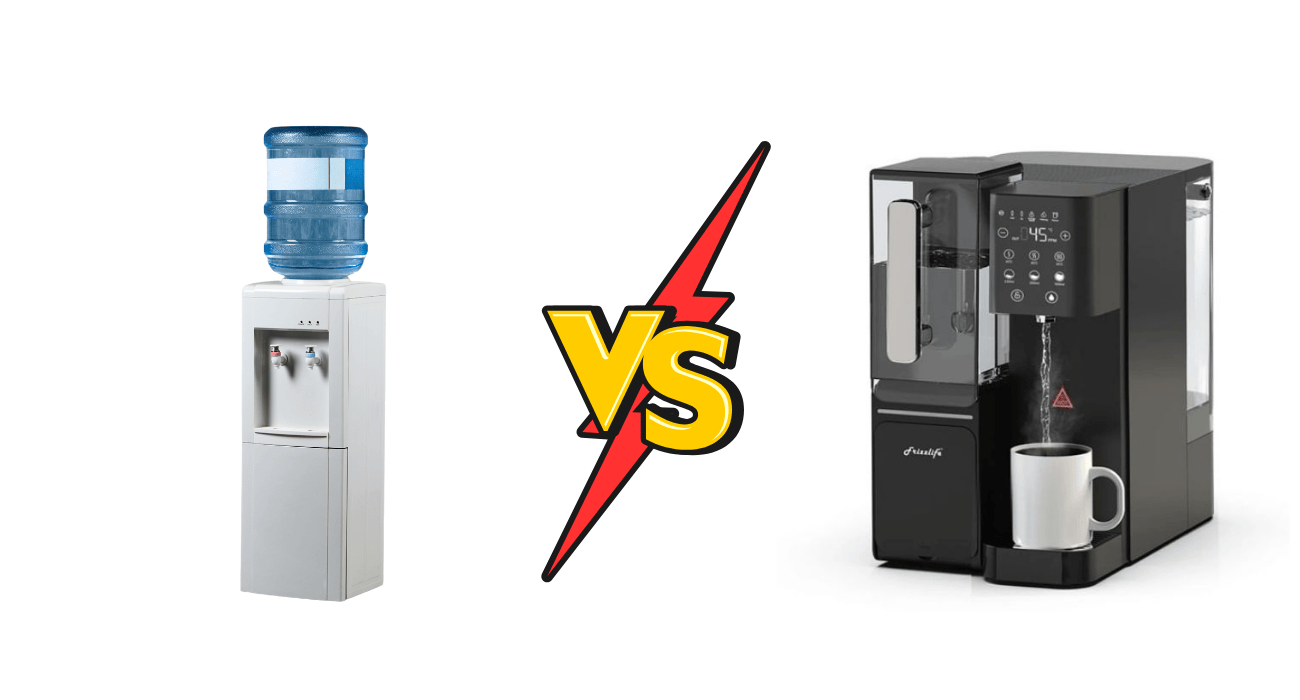
Countertop vs. Freestanding Water Dispensers: Which One Wins?
Ever wrestled with a giant water bottle on your counter or wished your dispenser wasn’t hogging floor space? Short answer: Countertops save space, freestanding holds more—your lifestyle decides! This guide breaks it all down, from cost to convenience, plus how to choose the right countertop water dispenser if that’s your pick!
Countertop vs. Freestanding Water Dispensers: Which Is Right for You?
Choosing between a countertop or freestanding water dispenser can feel overwhelming. But it doesn't have to be. Many UK households are looking for easy access to clean drinking water at home. This article helps clear up the confusion, offering a clear comparison for British living spaces and lifestyles.
Whether you need to save kitchen counter space or prefer a bigger system, this guide has you covered. It looks at size, maintenance, and how often you use it. Find out how each option fits with typical UK home layouts and the nation's growing focus on staying hydrated.
Introduction: Understanding the Differences and Benefits
Defining Countertop Water Dispensers
Countertop water dispensers are compact, sitting neatly on a kitchen counter or tabletop. They typically hold smaller water bottles (2–5 litres) and are ideal for flats or small kitchens. Many models offer both chilled and room-temperature water, making them perfect for quick access.
Their lightweight design means they can be easily moved, and installation is minimal—just plug in and fill up. If you're looking for a low-maintenance way to stay hydrated, countertop models might be the way to go.
Defining Freestanding Water Dispensers
Freestanding water dispensers, on the other hand, are larger units designed to stand on the floor. They accommodate bigger water bottles (10–20 litres) and often have hot and cold water functions.
These dispensers are perfect for family homes, offices, or communal areas where multiple people need regular access to water. While they take up more space, they require less frequent refilling compared to countertop models.
Space and Placement Considerations
Countertop Dispensers: Space-Saving Solutions
Ideal for Small Spaces
If you're working with limited kitchen space, a countertop dispenser is a smart choice. It fits neatly in corners or next to appliances without taking up valuable floor space.
Portability and Flexibility
Countertop dispensers are lightweight and easy to move, perfect for renters or those who like to rearrange their kitchen setup.
Freestanding Dispensers: Larger Capacity and Placement
Ideal for High-Traffic Areas
Freestanding dispensers are great for busy households, offices, or shared spaces where multiple people need access to water throughout the day.
Requires Dedicated Floor Space
Unlike countertop models, freestanding dispensers require a dedicated spot. You’ll need to ensure there’s enough clearance for bottle changes and that it's near a power source if needed.
Capacity and Water Volume
Countertop Dispensers: Moderate Capacity
Designed for smaller households, countertop models typically require more frequent refilling. If you drink a lot of water, expect to swap bottles more often.
Freestanding Dispensers: High-Volume Capacity
Freestanding units hold larger bottles, reducing the need for constant refills. This makes them ideal for families or workplaces with high water consumption.
Installation and Setup
Countertop Dispensers: Easy Installation
Setting up a countertop dispenser is as easy as plugging it in and placing the water bottle.
Bottled vs. POU Options
Some models use refillable bottles, while others connect directly to a water supply (point-of-use, or POU). Choose based on convenience and water access.
Freestanding Dispensers: More Complex Installation
Freestanding dispensers, especially those with hot water functions, may require more setup.
Plumbing and Electrical Requirements
If you choose a plumbed-in model, you’ll need a water supply connection. Heated units may also require additional power considerations.
Functionality and Features
Countertop Dispensers: Variety of Features
Hot, Cold, and Filtered Options
Many countertop models offer cold and room-temperature water, with some including built-in filtration. Hot water options are less common due to size constraints.
Freestanding Dispensers: Robust Features
Higher Dispensing Rate
Freestanding dispensers typically have a higher water flow rate, making them more efficient for frequent use. Many also feature temperature control and filtration.
Maintenance and Upkeep
Countertop Dispensers: Simple Maintenance
With fewer components, countertop dispensers are easy to clean. Most require only regular bottle changes and occasional descaling.
Freestanding Dispensers: More Extensive Maintenance
Freestanding models may need deeper cleaning and filter replacements, particularly if they have hot water or filtration functions.
Cost Comparison: Initial and Ongoing Expenses
Purchase Price
- Countertop models: £60–£150
- Freestanding models: £120–£300+
Maintenance and Operational Costs
Freestanding dispensers may have higher running costs due to energy use and filtration systems, while countertop models tend to be more budget-friendly in the long run.
Usage Scenarios and Recommendations
For Home Use
Small households or flats benefit from countertop dispensers, while larger families may prefer freestanding options for higher capacity.
For Office Use
Freestanding dispensers are ideal for workplaces, providing enough water for multiple employees without constant refilling.
For Commercial Settings
Businesses, gyms, and cafes may require high-capacity freestanding units with filtration for customer convenience.
Addressing Common Concerns
Water Quality and Filtration
Both countertop and freestanding dispensers offer filtered options, improving water taste and safety.
Energy Consumption
Countertop models generally use less energy, while freestanding units with heating functions consume more power. Look for energy-efficient options to save on bills.
Conclusion: Choosing the Right Dispenser for Your Environment
Ultimately, the choice between a countertop and a freestanding water dispenser depends on your space, usage, and budget.
- Pick a countertop dispenser if you need a compact, easy-to-move option for a smaller household or workspace.
- Choose a freestanding dispenser if you need a higher capacity and extra features like hot water or built-in filtration.
Whichever you go for, staying hydrated has never been easier!
More Countertop Water Dispenser info we think you'll love
Understanding Filtration Systems in Countertop Water Dispensers
Space and Design Considerations for Countertop Water Dispensers
Do countertop water filtration systems work?
Are countertop water filters worth it?


Leave a comment